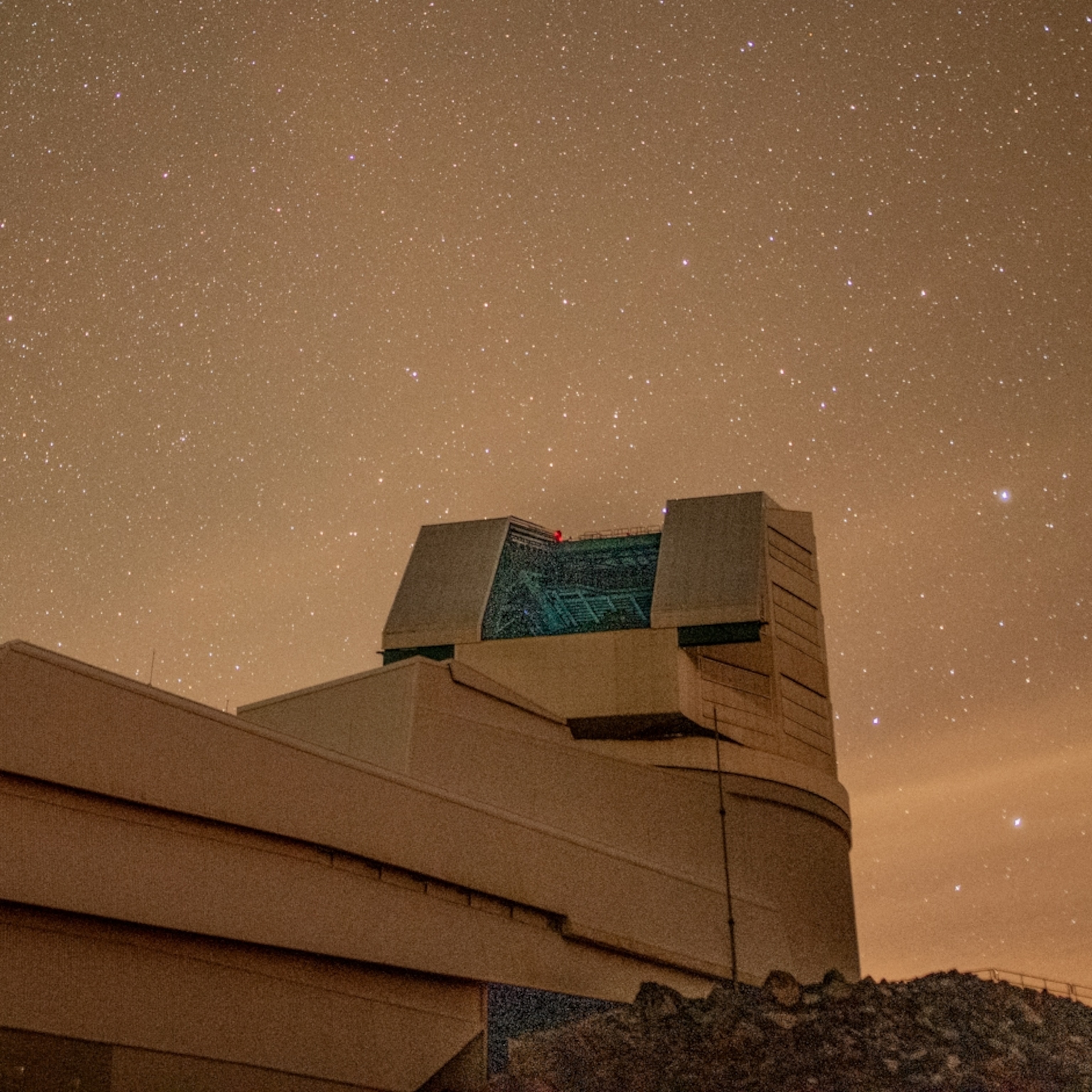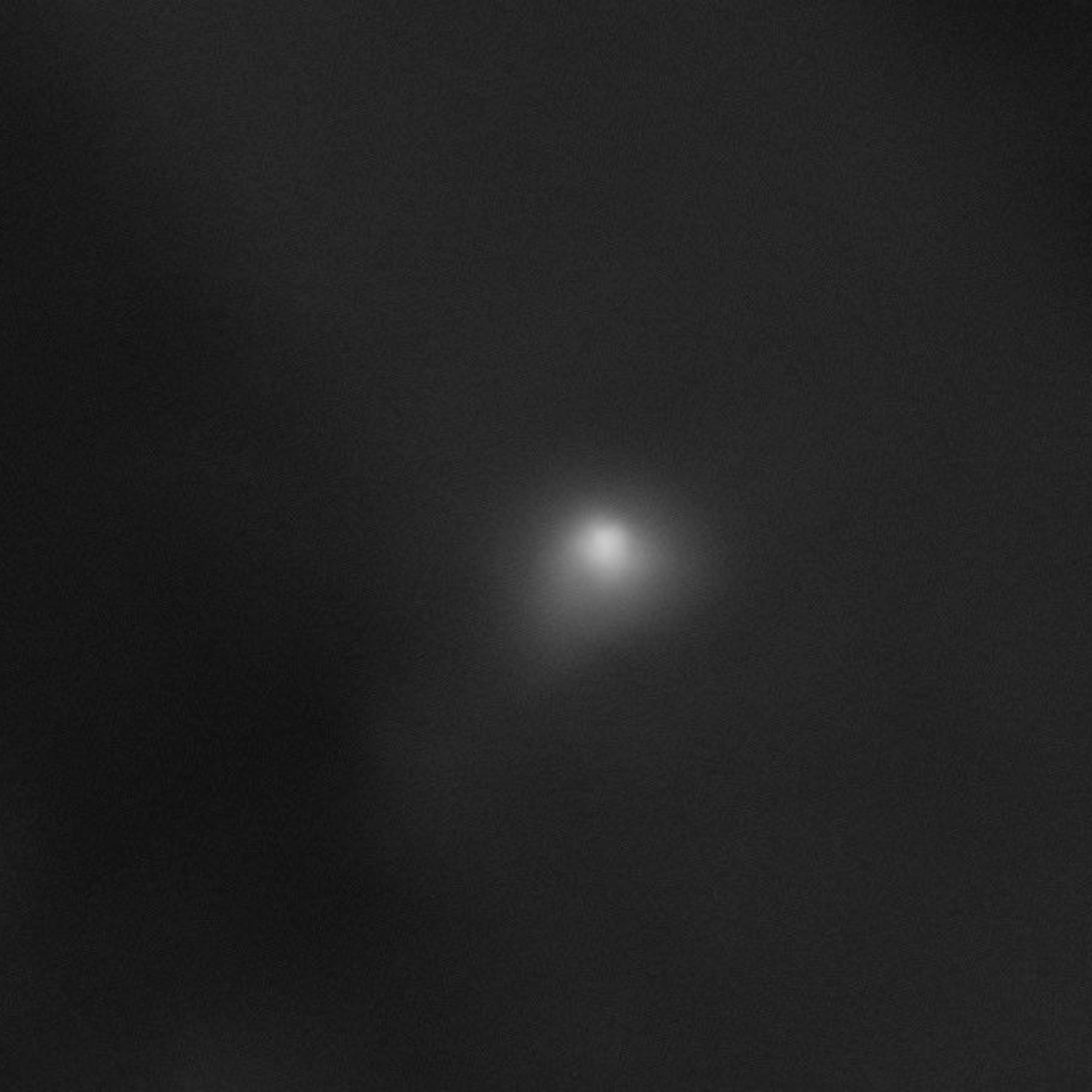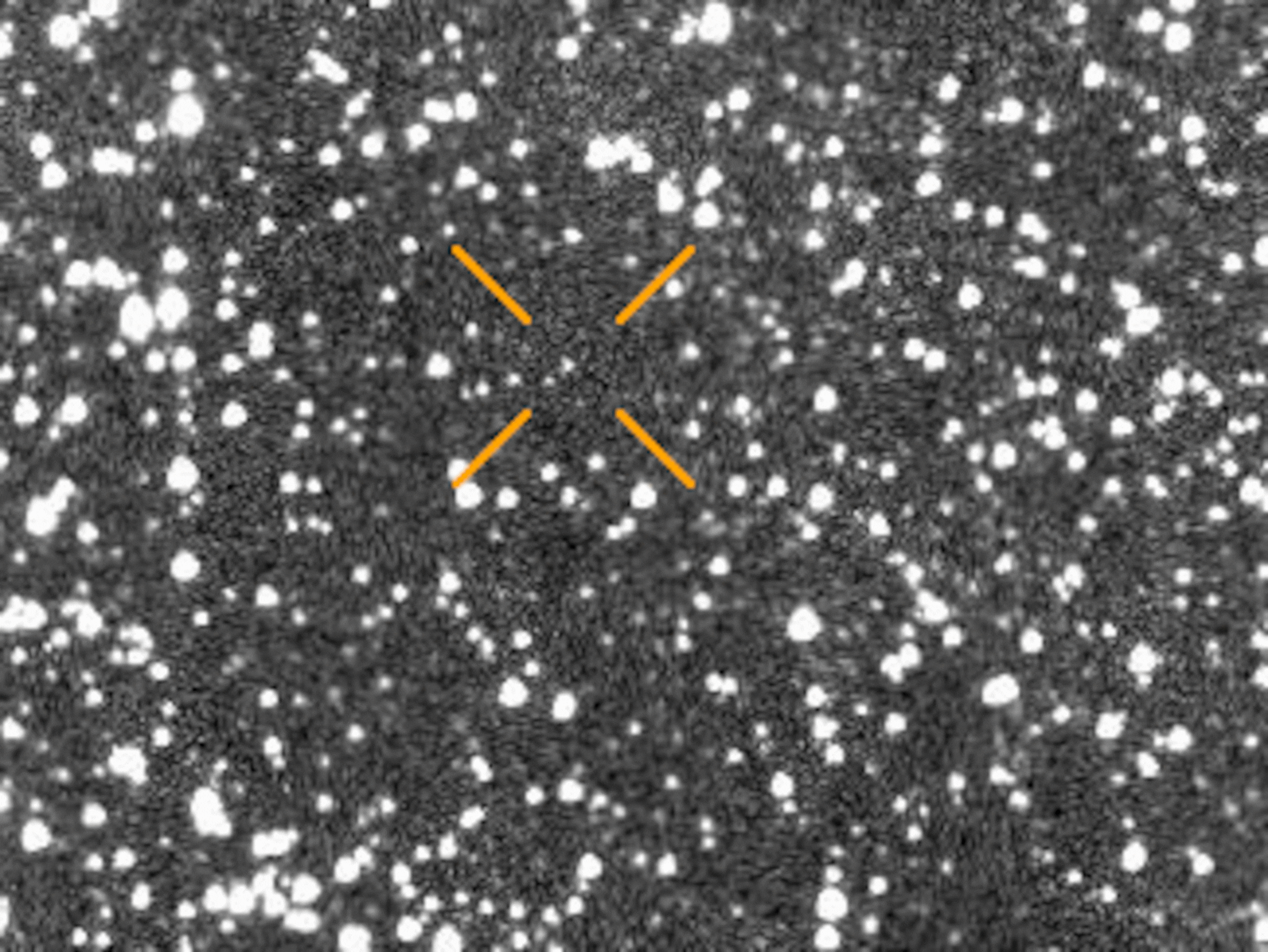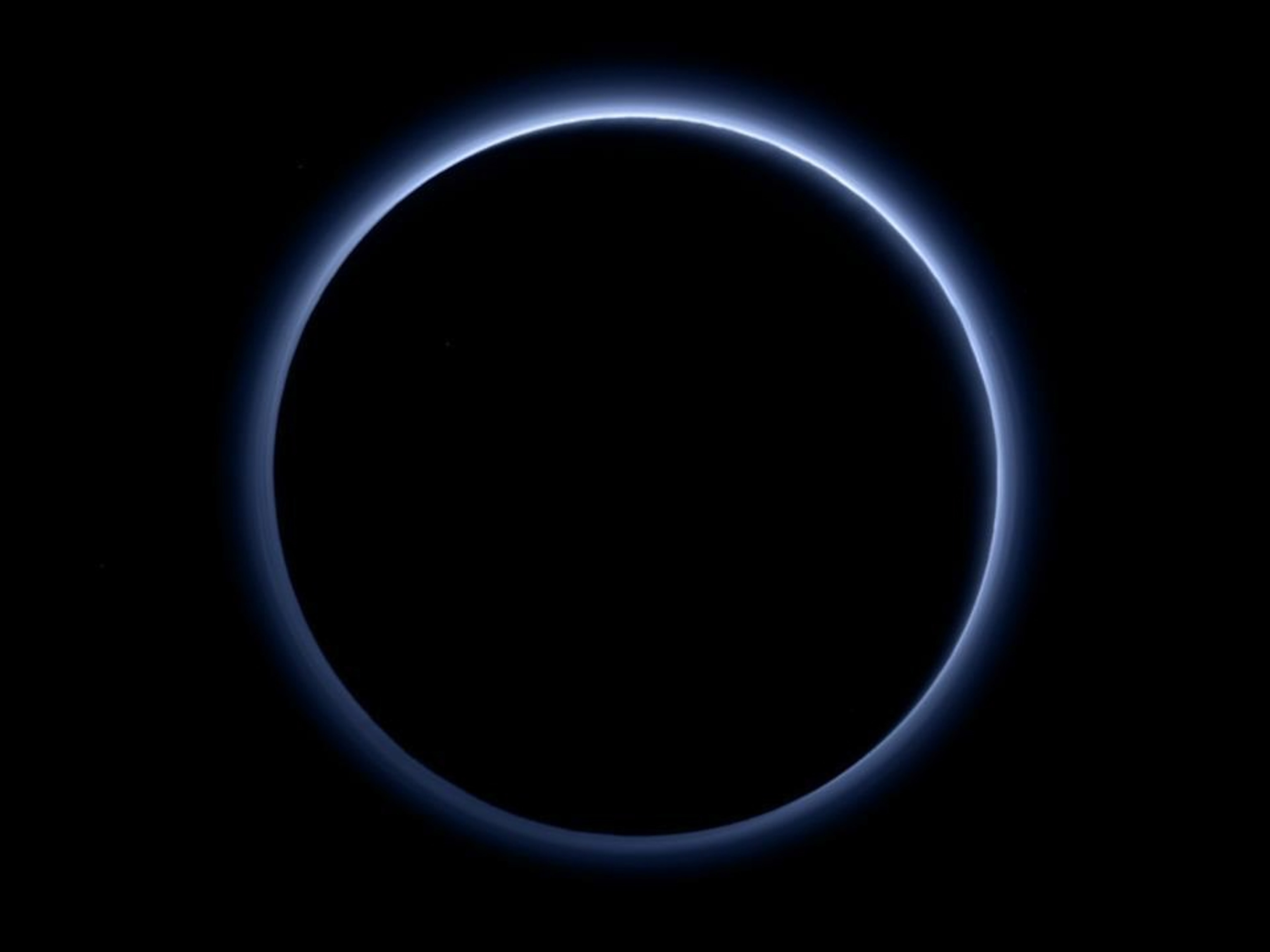
Dwarf Planet Discovery Hints at Hidden World Orbiting Solar System
Plenty of dwarf planets hide out beyond Pluto, perhaps steered by something much bigger.
Discovery of an icy "dwarf" world beyond Pluto hints that a much bigger planet may hide even farther out in the dim reaches of the solar system, astronomers suggested on Wednesday. (Read "Our Solar System" in National Geographic magazine.)
They point to the discovery of the dwarf planet with an orbit they see as stretched out by the mystery planet as evidence that it lurks about 250 times farther away from the sun than Earth. (See "Dwarf Planets.")
The same mystery planet, perhaps two to ten times heavier than the Earth, may have stretched out the orbit of another dwarf-planet-size object called Sedna, discovered ten years ago, also orbiting far beyond Pluto.
"A rogue planet could have been ejected from our solar system and perturbed their orbits," says astronomer Scott Sheppard of the Carnegie Institution for Science in Washington, D.C., who coauthored the discovery report in the journal Nature. "Definitely, it could still be out there."
In the study, Sheppard and astronomer Chad Trujillo of the Gemini Observatory in Hilo, Hawaii, first report the finding of 2012 VP113 (nicknamed "Biden" after another VP). The dwarf planet is about 280 miles (450 kilometers) wide. It now orbits roughly 7.8 billion miles (12.4 billion kilometers) away from the sun, some 83 astronomical units deep in the solar system (one astronomical unit, or AU, is 93 million miles, the average distance from the Earth to the sun).
Based on the swath of sky that needed to be surveyed to turn up the discovery, the astronomers estimate that perhaps 900 of these frozen worlds, ones more than 620 miles (1,000 kilometers) wide, may orbit beyond Pluto.
"To all intents and purposes, in the current architecture of the solar system, Sedna and 2012 VP113 should not be there," says astronomer Megan Schwamb of Taiwan's Academia Sinica, in a commentary accompanying the study. "This suggests that Sedna and 2012 VP113 are the tip of the iceberg," she concludes.
Belt Tightening
Along with 11 other objects orbiting beyond Pluto (including Sedna), the finding suggests that these icy dwarf planets—rounded by gravity but smaller than Mercury—swarm the far reaches of the solar system. They matter, astronomers say, because their orbits preserve the fingerprints of planetary migrations seen after the sun's birth in a stellar nursery more than 4.5 billion years ago.
Because the survey that turned up 2012 VP113 scanned a part of the sky equal to to the width of about 50 full moons, the survey points to the expectation of hundreds more dwarf planets awaiting discovery, alongside thousands more smaller objects, far out in the solar system.
Pluto is often considered the king of the Kuiper Belt, a stream of cometlike objects seen out to about 50 AUs from the sun. The team also reports an absence of objects beyond that outer edge of this belt, creating a gap stretching from 50 to 75 AUs from the sun, where Sedna and 2012 VP113 reside.
"The discovery does make Sedna look like part of a cluster," says astronomer Harold Levison of the Southwest Research Institute in Boulder, Colorado, who was not part of the study. "And when you see that number of objects, 12, all similar, it suggests something interesting."
Inner Oort Cloud
The International Astronomical Union now officially recognizes five worlds as dwarf planets. They are the largest asteroid, Ceres, and four small, distant, icy worlds: Pluto, Eris, Makemake, and Haumea. The last three were discovered in the past decade by teams that included Trujillo and were led by Caltech's Mike Brown.
But Sedna is not officially a dwarf planet, despite its estimated width of 618 miles (995 kilometers). It has a long, elongated orbit similar to that of 2012 VP113, but even more stretched out. Both worlds, and the ten smaller "trans-Neptunian" objects pinpointed in the study that reside farther from the sun than Pluto does, on the outer edge of the Kuiper Belt, follow similar elongated orbits.
Remarkably, they all have orbits whose point of closest approach to the sun, their perihelions, cluster together on the same side of the solar system. For example, 2012 VP113 comes within 80 AUs of the sun at its closest point of approach to our star. Sedna comes within 76 AUs, a perihelion that will occur in 2076 and on the same side of the sun.
This orbital coincidence is what statistically suggests that a bigger planet tugged either long ago or continuously now at these smaller worlds' orbits to keep them clustered together. If the putative bigger planet is still there and is only a few times bigger than Earth, it would circle the sun about 250 times farther away than our planet does. A bigger one would circle even farther away.
Although 2012 VP113's discovery looks solid, Levison expressed caution about the notion of the planet theorized by the study authors. "There may be another explanation we just haven't seen yet," he says.
Either way, Sheppard says, objects such as Sedna and 2012 VP113 are part of the Oort Cloud of comets, named for the astronomer Jan Oort. The Oort Cloud is theorized to exist as far as 1,000 AUs from the sun.
Dwarf planets such as 2012 VP113 and Sedna, which travels as far as 949 AUs away from the sun on its 11,400-year orbit, form a placid "inner" Oort Cloud distinct from the outer one, the study suggests. Comets that plunge into the inner solar system are thought to be dispatched from the outer Oort Cloud by gravitational nudges from stars passing near our solar system.
Dwarf worlds like 2012 VP113, which doesn't orbit as far away from the sun, wouldn't feel those nudges from passing stars. They instead retain "primordial" orbits unchanged from the early days of the solar system, Schwamb says. In that epoch, the giant planets Jupiter, Saturn, Uranus, and Neptune migrated closer into the solar system, causing a bombardment of the inner solar system by comets.
Correction: The original story misstated the distance to 2012 VP113.
Follow Dan Vergano on Twitter.








